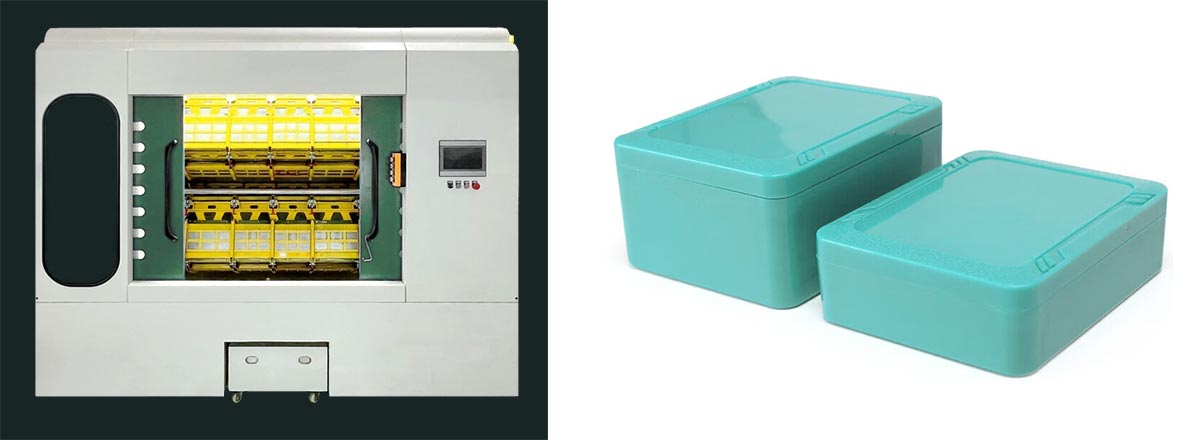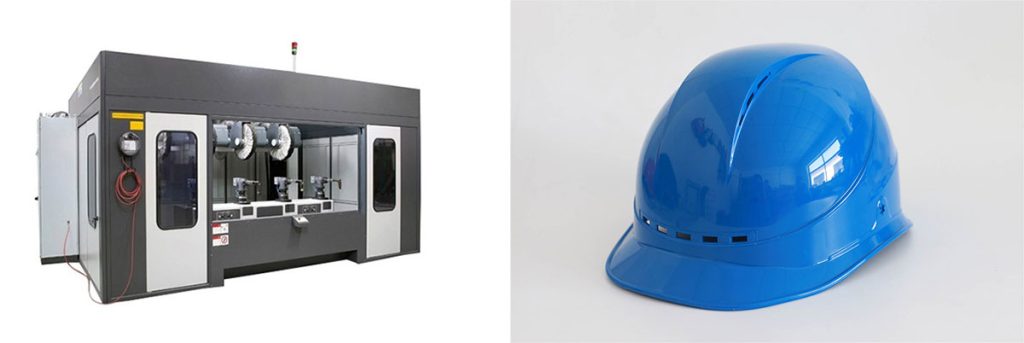

Selecting the right consumables plays a crucial role in achieving excellent results with a plastic polishing machine. Each consumable must align with the specific needs of the material being polished. High-quality consumables not only enhance the machine’s performance but also prevent surface damage. Using incompatible options can lead to poor finishes or even equipment issues. By understanding the requirements of different plastics and the capabilities of your machine, users can make better choices and improve their polishing outcomes.
Key Takeaways
- Use the right consumables for each plastic type. Soft plastics need mild polish, but hard ones need special polishing compounds.
- Try consumables on a small piece first. This avoids big mistakes and checks if they work well with the plastic and machine.
- Pick good-quality consumables from trusted brands. Good products work better and lower the chance of damage.
- Check how consumables are working often. Watching for wear helps you replace them on time and keep polishing results steady.
Match Consumables to the Plastic Material
Understand Plastic Types and Their Requirements
Soft vs. Hard Plastics and Their Compatibility with Consumables
Different plastics require tailored approaches to achieve optimal finishing. Soft plastics, such as acrylic, are prone to scratches and demand gentle polishing techniques with fine abrasives. Hard plastics, like polycarbonate, benefit from specialized polishing compounds that can handle their durability without causing surface damage. Choosing the right consumables ensures the plastic polisher delivers consistent results while preserving the material’s integrity.
How Different Plastics Respond to Polishing Compounds?
Polishing compounds interact differently with various plastics. For instance, acrylic responds well to flame polishing, which enhances clarity and smoothness. Polycarbonate, on the other hand, achieves better results with vapor polishing or mechanical polishing using specific compounds. The table below highlights common plastics and their recommended polishing methods:
| Plastic Type | Polishing Method |
|---|---|
| Acrylic | Mechanical polishing with fine abrasives, flame polishing |
| Polycarbonate | Mechanical polishing with specialized compounds, vapor polishing |
| ABS | Mechanical polishing, chemical polishing with solvents |
| Nylon | Mechanical polishing with fine abrasives, tumble polishing |
Understanding these differences helps users select consumables that align with the material’s unique properties.
Align Consumables with Desired Surface Finish
Choosing Consumables for High-Gloss vs. Matte Finishes
The desired finish plays a significant role in consumable selection. High-gloss finishes require fine-grit abrasives and polishing compounds designed for mirror-like clarity. Matte finishes, however, need consumables that create a uniform texture without excessive shine. Selecting the right tools ensures the plastic polishing machine achieves the intended surface finishing.
Precision Polishing for Intricate Plastic Parts

Polishing intricate plastic parts presents unique challenges. Small crevices and detailed designs demand precision tools and consumables. Following a step-by-step approach improves results:
- Start with a coarser grit for initial material removal.
- Transition to medium grits to eliminate scratches.
- Finish with fine abrasives for a smooth, polished plastic surface.
Safety and environmental considerations also matter. Using eco-friendly compounds, proper ventilation, and personal protective equipment ensures a safe and efficient polishing process.
Test Consumables Before Full-Scale Use
Benefits of Sample Testing for Compatibility
Testing consumables on a small scale prevents costly mistakes. A trial run reveals how the consumables interact with the plastic and ensures compatibility with the machine. This step minimizes risks and helps users achieve consistent surface finishing.
Avoiding Surface Damage Through Trials
Sample testing also identifies potential issues, such as scratches or uneven finishes. Adjustments can be made before full-scale polishing begins. This proactive approach protects the plastic and enhances the polisher’s performance over time.
Prioritize Quality and Performance of Consumables
Select Reputable Brands and Suppliers
Importance of Trusted Brands in Plastic Polishing
Trusted brands ensure consistent results in plastic polishing. These brands invest in research and development to create consumables that meet industry standards. Their products often undergo rigorous testing to ensure compatibility with various plastic types and polishing techniques. Using consumables from reputable brands reduces the risk of surface damage and enhances the clarity and finish of polished plastic.
Verifying Supplier Reliability for Consistent Quality
Reliable suppliers play a critical role in maintaining the quality of consumables. To verify a supplier’s reliability, consider the following:
- Suppliers with certifications like ISO 9001 demonstrate a commitment to quality assurance.
- Those offering customization options can provide consumables tailored to specific surface preparation needs.
- Strong technical support ensures access to experts for troubleshooting and advice.
- Eco-friendly options from suppliers help reduce environmental impact.
Choosing a dependable supplier ensures consistent surface finishing and long-term performance of the plastic polisher.
Evaluate Durability and Cost-Effectiveness
Balancing Initial Cost with Long-Term Performance
Durable consumables may have a higher upfront cost but often provide better value over time. High-quality consumables last longer, reducing the frequency of replacements. This durability minimizes downtime and ensures the machine operates efficiently. Investing in reliable consumables enhances the overall performance of the plastic polishing machine.
Identifying Signs of High-Quality Consumables
High-quality consumables exhibit specific characteristics. Uniform grit size ensures consistent finishing results. Consumables that maintain their integrity during use prevent uneven finishes. Additionally, products designed for specific polishing techniques, such as mechanical or chemical polishing, often deliver superior clarity and surface finishing.
Ensure Consistent Results Over Time
Importance of Uniform Performance in Polishing
Uniform performance is essential for achieving consistent results. Consumables with predictable wear patterns allow users to control the polishing process effectively. Sequential polishing, starting with coarser grits and progressing to finer ones, ensures a smooth and polished plastic surface.
Detecting and Addressing Inconsistencies in Consumables
Regular monitoring of consumables helps identify inconsistencies. Signs such as uneven wear or reduced effectiveness indicate the need for replacements. Adjusting consumable choices based on machine performance ensures optimal results. Safety measures, including proper ventilation and eco-friendly compounds, further enhance the polishing process.
Ensure Compatibility with Your Plastic Polishing Machine
Match Consumables to Machine Specifications
Proper Fit and Function for Optimal Performance
Consumables must align with the specifications of the plastic polishing machine to ensure optimal performance. Key factors to consider include accuracy, equipment longevity, and cost efficiency. High-quality consumables enhance the accuracy of polishing results and reduce the risk of damage to the machine. Properly matched consumables also ensure compliance with industry standards, which helps avoid legal liabilities and maintains the credibility of the polishing process.
Preventing Machine Damage from Incompatible Consumables
Using incompatible consumables can lead to significant issues, including machine damage and poor surface finishing. For example, consumables that do not fit properly may cause uneven polishing or excessive wear on the machine’s components. Selecting consumables designed specifically for the machine prevents these problems and ensures consistent results. Regularly consulting the machine’s manual and supplier recommendations helps users make informed choices.
Focus on Ease of Use and Maintenance
Consumables That Simplify the Polishing Process
Consumables designed for ease of use streamline the polishing process and improve efficiency. These products often feature straightforward operation, reducing complexity during setup and handling. For instance, modular consumables can be tailored to specific applications, enhancing operational flexibility. Additionally, single-use systems minimize the risk of cross-contamination, ensuring product safety during surface preparation.
Reducing Downtime with Easy-to-Maintain Options
Consumables that require minimal maintenance reduce downtime and improve productivity. Products with longer service lives, such as durable plastic media, decrease the frequency of replacements. This durability not only lowers costs but also ensures a smoother surface finish. Furthermore, consumables that produce less dust or debris contribute to a safer and cleaner working environment, enhancing worker safety.
| Benefit | Description |
|---|---|
| Improved Surface Finish | Plastic media is gentle on the parts being finished, resulting in a smoother surface finish and reducing the risk of damage. |
| Improved Worker Safety | Plastic media does not produce dust or sharp particles, making it a safer option for workers compared to traditional abrasive media. |
| Longer Service Life | Plastic media has a longer service life than traditional abrasive media, reducing the frequency of media replacement and reducing costs associated with media replacement. |
| Versatility | Plastic media is available in a wide range of shapes, sizes, and abrasiveness levels, making it suitable for a variety of finishing applications. |
Monitor Consumable Performance Regularly
Tracking Wear and Tear for Timely Replacements

Monitoring consumables over time ensures consistent performance and prevents unexpected issues. Best practices include creating a detailed inventory of all consumables, including their descriptions and values. A perpetual inventory system provides real-time updates, helping users track wear and tear effectively. Timely replacements prevent disruptions and maintain the quality of polished plastic surfaces.
Adjusting Consumable Choices Based on Machine Performance
Regular evaluation of consumable performance allows users to make necessary adjustments. For example, if a consumable shows signs of uneven wear or reduced effectiveness, switching to a higher-quality option may improve results. Training employees to manage inventory and monitor consumables ensures the plastic polisher operates efficiently. This proactive approach enhances the clarity and finish of polished plastic surfaces while reducing costs.
Conclusion
Selecting the right consumables ensures consistent results and enhances the performance of a plastic polishing machine. Matching consumables to the plastic material prevents surface damage and achieves the desired finish. High-quality consumables improve accuracy, reliability, and optical clarity while reducing long-term costs. Ensuring compatibility with the polisher avoids equipment damage and maintains compliance with industry standards. Following best practices for plastic polishing optimizes surface preparation and delivers high-quality finishes. By prioritizing these factors, users can achieve superior polished plastic surfaces with enhanced clarity and durability.
